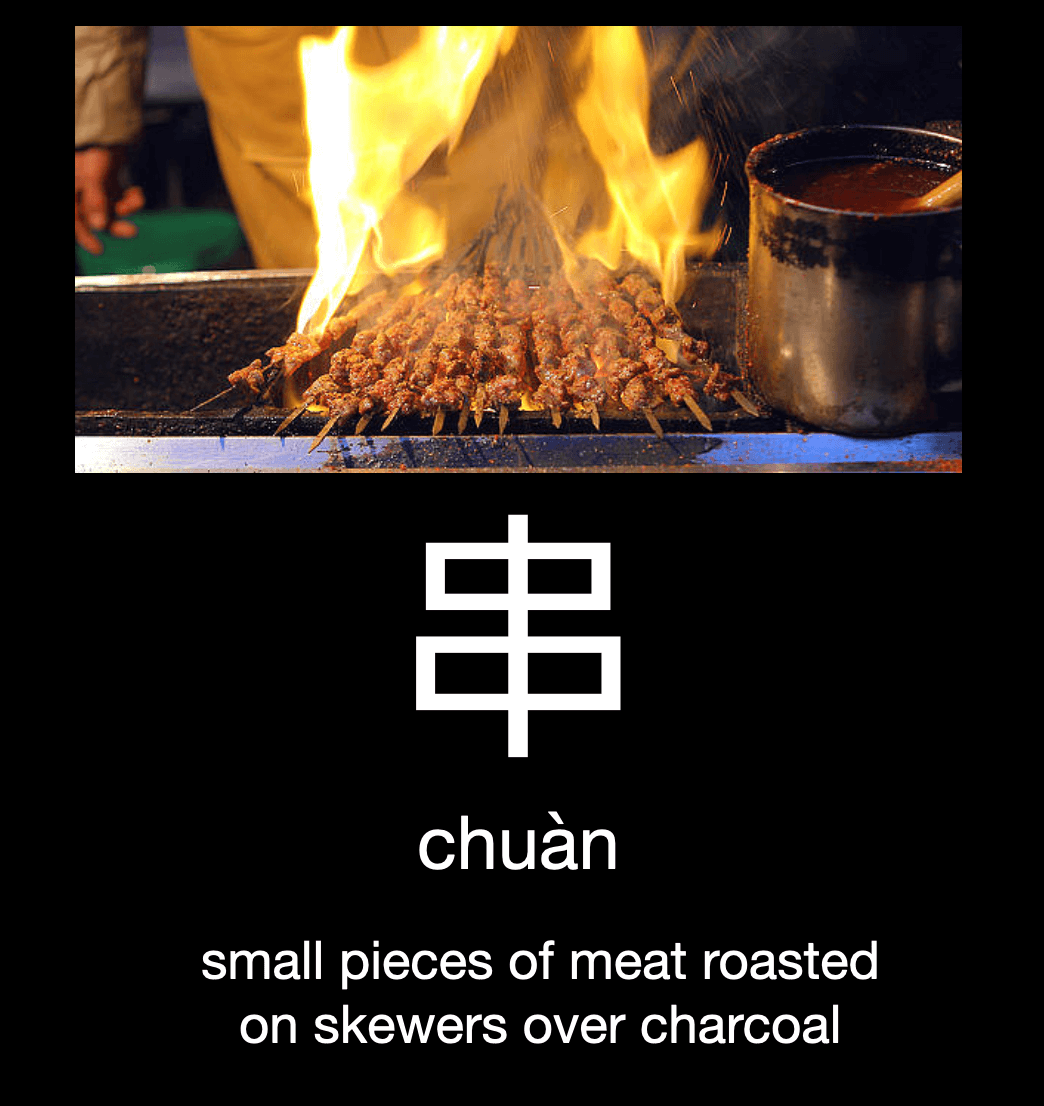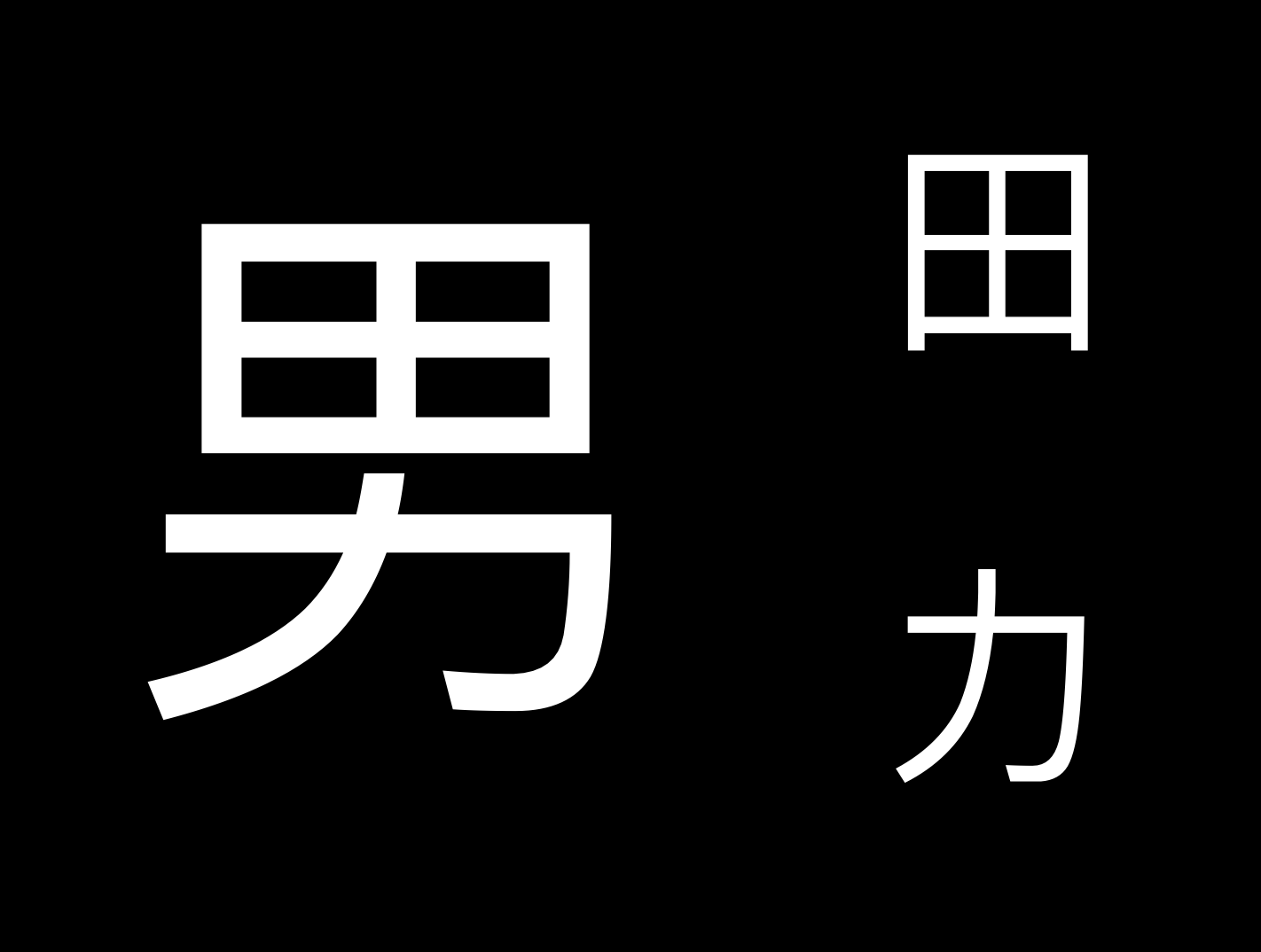There are over 5000 Chinese characters, here are 5 interesting Chinese characters.

1) 串
What does it mean?
Chuan (pronounced “chwan”) are small pieces of meat roasted on skewers over charcoal or sometimes, electric heat. It is also sometimes cooked by deep frying in oil (popular in Beijing). It can be classified as a type of kebab.[citation needed] Chuan was traditionally made from lamb (yáng ròu chuàn, 羊肉串, lamb meat chuan), which is still the most common kind, but now, chicken, pork, beef and various types of seafood can also be used. Especially in tourist areas, chuan can be found made with various insects, bugs, birds and other exotic animals. In general, chuan may be spiced according to preference, but generally cumin seeds, dried red pepper flakes, salt, black pepper and sesame or sesame oil are sprinkled or brushed onto it. Another popular incarnation is mantou chuan or “steamed bun chuan”; it is commonly brushed with a sweet bean sauce (甜面酱, not to be confused with sweet red bean paste) and its taste serves as a foil to the often spicy meat chuan.
In Tianjin and Jinan, chuan is often served with small round breads (馅饼, xiàn bǐng), also grilled with the same spices. Xiàn bǐng technically means “pie” or “filled bread”. After cooking the bread and meat, the bread is split open and chuan meat is stuffed inside, then eaten together.
Other meanings:
- to string together; to link up
- string; chain; series of objects quotations ▼
- skewer
- Classifier for strung, bunched or clustered objects.
- to gang up on; to conspire; to collaborate quotations ▼
- to cross; to criss-cross; to traverse to; to mix (undesirably)
- to pay a visit to; to visit; to move about quotations ▼
2) 男

The chinese character for 男 means
田
力
3) 水沝淼㵘
Shuǐ zhuǐ miǎo màn
4)
Huo Yan Yanyi is a word, pinyin is huǒ yán yàn yì, used to describe the increasing intensity of fire. This term mainly emphasizes the word “fire”. From the first character to the fourth character, there are more and more characters of “火”, which means that the fire is getting stronger and stronger.
Extended information:
1. Fire huǒ
Burning, the light and flames emitted when the material burns: ~ force. ~ Candle. ~ Source. ~ Flame. Smoke~. ~Zhongtake Li (for other people take risks and contribute, but oneself suffers a disadvantage and has nothing to gain).
2. Inflammation
Heat: ~ Hot. ~ Cool (a. The climate is hot and cold; b. Yu is snobbish, or affectionate, or indifferent and alienated, capricious). Trend ~ attached to the trend. ~~.
3. Yan
Guanghua, light flame (flame of fire) such as: Yan Fei (the appearance of sparks dancing); Yan You (the sparks are dancing); Yan Yan (flame); Yan Yan (the appearance of shining brilliance); Yan You (焱悠); Yan Inflammation
4, yì
The appearance of the fire, describing how fierce the fire is.
- to blaze
- (used in given names)
火 is just fire. The thing you saw, the warmth you get, simplest fire.
炎 is… flame? And it is more elegent than 火, you can see more 炎 in poems instead of 火, even they almost have the same meaning.
炏 is the variant of 炎, which means, not officially correct, won’t be used in formal situations, but you know what it is since you’ve already know 炎.
焱 is used to describe the beauty of firelight. Only the light.
燚 have a meaning of fire buring intensely, it is also used to refer to“the appearance of fire”. However, when this character is used in a given name, it means safe and sound. Strange but cool name.
5)
You won’t find these two characters in your HSK list. They’re not used in standard mandarin, but they are used in some dialects.
手 ✋